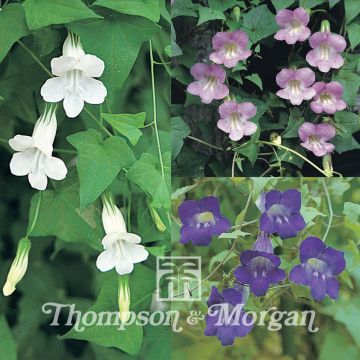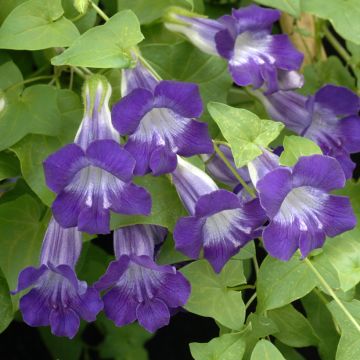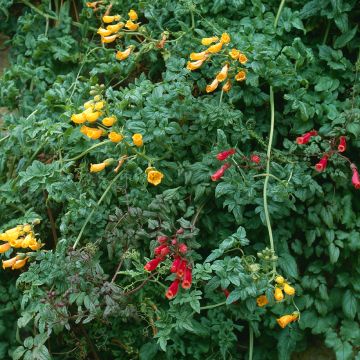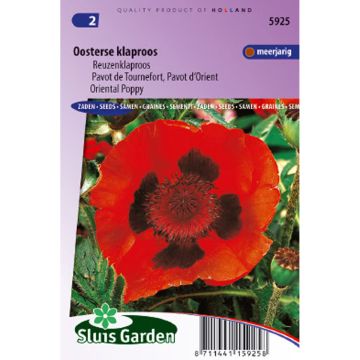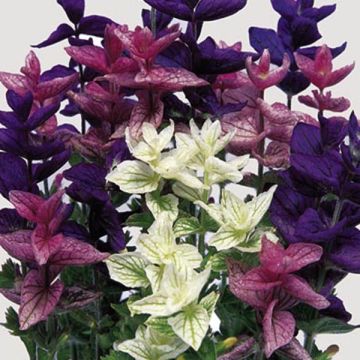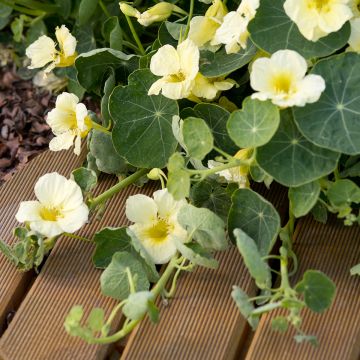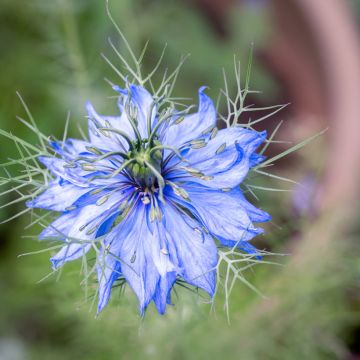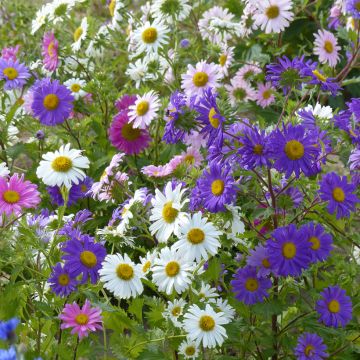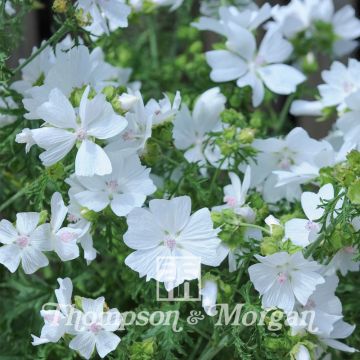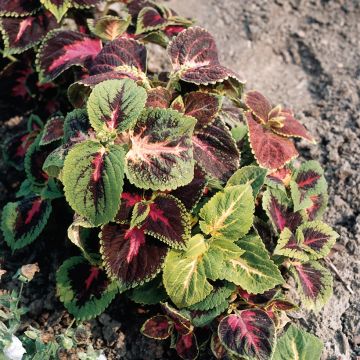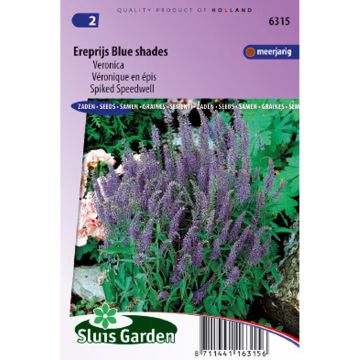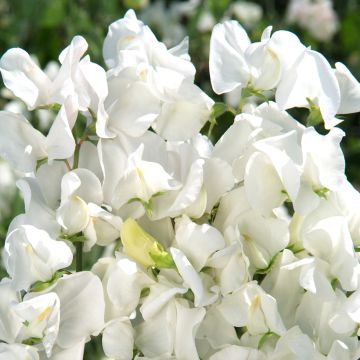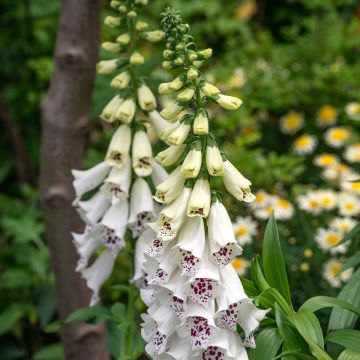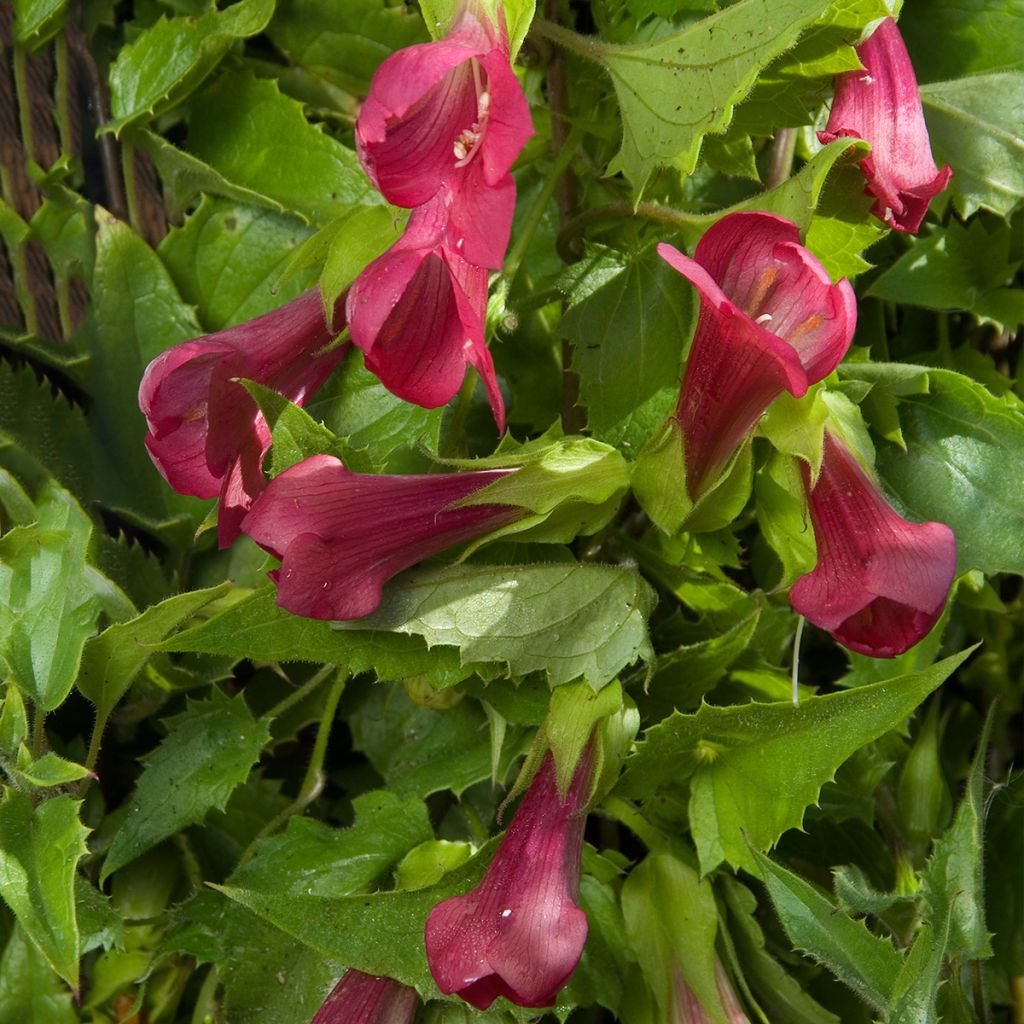

Asarina wislizeni Red Dragon - Climbing Snapdragon
Asarina wislizeni Red Dragon - Climbing Snapdragon
Asarina wislizeni Red Dragon
Climbing Snapdragon Vine, Violet Twining Snapdragon
This item cannot be shipped to the selected country
Dispatch by letter from €3.90
More information
Schedule delivery date,
and select date in basket
This plant carries a 6 months recovery warranty
More information
We guarantee the quality of our plants for a full growing cycle, and will replace at our expense any plant that fails to recover under normal climatic and planting conditions.
Seed-only orders are dispatched by sealed envelope. The delivery charge for seed-only orders is €3.90.
Does this plant fit my garden?
Set up your Plantfit profile →
Description
Asarina wislizeni 'Red Dragon' is a beautiful variety with deep purple-red flowers that turn magenta-pink. Its flowers are reminiscent of snapdragons. They appear along the stems from summer until the first frost. They will even bloom into winter if protected from frost. It is a perennial plant with a tuberous root, but not very hardy. It is often grown as an annual or in pots to protect it from cold in a conservatory or unheated greenhouse. Climbing or trailing, this asarina is wonderful in hanging baskets, containers, or for adorning a small structure. It likes warmth and will thrive in moist but well-drained soil, in any exposure.
Asarina wislizeni 'Red Dragon' is a hybrid horticultural selection. One of its ancestors, Epixiphium wislizeni or Maurandya wislizeni, is a creeping botanical species with sandy soil origins in the desert areas of the southwestern United States (Texas, Arizona) and northern Mexico. There have been recent changes in the classification of asarinas: among them, asarina, maurandya, lophospermum, and epixiphium are distinguished. All these plants, once classified in the Scrophulariaceae family, have been moved to the Plantaginaceae family. Asarina wislizeni 'Red Dragon' is a plant with a tuberous, pivot-like root and voluble, climbing, or trailing stems. Its above-ground growth persists in frost-free winters, but its root can withstand a few degrees of frost in dry soil (-5°C (23°F) at its lowest point). In this case, the aerial growth is destroyed, but the plant produces numerous stems from its root in spring.
The 'Red Dragon' asarina grows rapidly, with stems that can reach 1.2m (4ft) in a season, or a little more in open ground. The flexible stems crawl on the ground or cling to their support using leaf petioles transformed into tendrils. They are adorned with pale-green to bluish-green heart-shaped leaves with toothed edges. Flowering begins in July and continues until the first frost. If the plant is stored frost-free, it can continue to bloom in winter. The tubular flowers appear in the axils of the leaves, along the stems. They are elongated trumpet-shaped flowers composed of a tube that slightly widens into 5 lobes. Each flower can measure up to 7cm (3in) long. The inside of the corolla is illuminated with a speckled cream throat. The flowers give way to the formation of capsules containing multiple seeds.
Asarinas are ideal plants for unheated conservatories. Outdoors, their rapid growth allows them to climb in one season on bushes or small trees, as well as on wire fences and trellises. Like ipomoeas or sweet peas, they can be hung in baskets or allowed to run in rockeries above walls. The key is to provide them with warmth, non-scorching sun, and soil that doesn't dry out too much. It is also possible to dig up the tubers before frost and overwinter them frost-free with very little watering.
Attention! These seeds are reserved for highly experienced gardeners who are accustomed to sowing very fine seeds. These seeds are as fine as dust, barely visible to the naked eye.
Report an error about the product description
Flowering
Foliage
Plant habit
Botanical data
Asarina
wislizeni
Red Dragon
Plantaginaceae
Climbing Snapdragon Vine, Violet Twining Snapdragon
Maurandya, Lophospermum, Epixiphium)
Cultivar or hybrid
Other Asarina seeds
Planting and care
Sow from early February to mid-April in good potting soil, barely covering the seeds with a very thin layer of compost or vermiculite. Germination takes 14 to 21 days at 18-20°C (64.4 to 68°F). Light promotes germination and heat is essential. It can be useful to enclose the sowing in a polyethylene bag.
Once they are sufficiently developed to be handled, transplant the seedlings into 7.5cm (3in) pots and grow them in a cooler environment, repotting if necessary. For outdoor planting, gradually acclimatise the young plants to outdoor conditions and transplant them at the end of spring, after the last frost. Space them 30cm (12in) apart. Choose a sunny, but not scorching, sheltered location and plant in moist, well-drained soil. In very acidic soil, a pinch of lime is useful before planting to alkalise the substrate. To help the plant to climb, provide a support for it to attach to: a trellis, wire, etc. When suspended, the stems will gracefully droop.
Asarinas grow well in a greenhouse or conservatory, in pots with a diameter of 18 to 20cm (7 to 8in). The temperature should not drop below 5 to 7°C (41 to 44.6°F) in winter.
Sowing period
Intended location
This item has not been reviewed yet - be the first to leave a review about it.
Flower seeds
Haven't found what you were looking for?
Hardiness is the lowest winter temperature a plant can endure without suffering serious damage or even dying. However, hardiness is affected by location (a sheltered area, such as a patio), protection (winter cover) and soil type (hardiness is improved by well-drained soil).

Photo Sharing Terms & Conditions
In order to encourage gardeners to interact and share their experiences, Promesse de fleurs offers various media enabling content to be uploaded onto its Site - in particular via the ‘Photo sharing’ module.
The User agrees to refrain from:
- Posting any content that is illegal, prejudicial, insulting, racist, inciteful to hatred, revisionist, contrary to public decency, that infringes on privacy or on the privacy rights of third parties, in particular the publicity rights of persons and goods, intellectual property rights, or the right to privacy.
- Submitting content on behalf of a third party;
- Impersonate the identity of a third party and/or publish any personal information about a third party;
In general, the User undertakes to refrain from any unethical behaviour.
All Content (in particular text, comments, files, images, photos, videos, creative works, etc.), which may be subject to property or intellectual property rights, image or other private rights, shall remain the property of the User, subject to the limited rights granted by the terms of the licence granted by Promesse de fleurs as stated below. Users are at liberty to publish or not to publish such Content on the Site, notably via the ‘Photo Sharing’ facility, and accept that this Content shall be made public and freely accessible, notably on the Internet.
Users further acknowledge, undertake to have ,and guarantee that they hold all necessary rights and permissions to publish such material on the Site, in particular with regard to the legislation in force pertaining to any privacy, property, intellectual property, image, or contractual rights, or rights of any other nature. By publishing such Content on the Site, Users acknowledge accepting full liability as publishers of the Content within the meaning of the law, and grant Promesse de fleurs, free of charge, an inclusive, worldwide licence for the said Content for the entire duration of its publication, including all reproduction, representation, up/downloading, displaying, performing, transmission, and storage rights.
Users also grant permission for their name to be linked to the Content and accept that this link may not always be made available.
By engaging in posting material, Users consent to their Content becoming automatically accessible on the Internet, in particular on other sites and/or blogs and/or web pages of the Promesse de fleurs site, including in particular social pages and the Promesse de fleurs catalogue.
Users may secure the removal of entrusted content free of charge by issuing a simple request via our contact form.
The flowering period indicated on our website applies to countries and regions located in USDA zone 8 (France, the United Kingdom, Ireland, the Netherlands, etc.)
It will vary according to where you live:
- In zones 9 to 10 (Italy, Spain, Greece, etc.), flowering will occur about 2 to 4 weeks earlier.
- In zones 6 to 7 (Germany, Poland, Slovenia, and lower mountainous regions), flowering will be delayed by 2 to 3 weeks.
- In zone 5 (Central Europe, Scandinavia), blooming will be delayed by 3 to 5 weeks.
In temperate climates, pruning of spring-flowering shrubs (forsythia, spireas, etc.) should be done just after flowering.
Pruning of summer-flowering shrubs (Indian Lilac, Perovskia, etc.) can be done in winter or spring.
In cold regions as well as with frost-sensitive plants, avoid pruning too early when severe frosts may still occur.
The planting period indicated on our website applies to countries and regions located in USDA zone 8 (France, United Kingdom, Ireland, Netherlands).
It will vary according to where you live:
- In Mediterranean zones (Marseille, Madrid, Milan, etc.), autumn and winter are the best planting periods.
- In continental zones (Strasbourg, Munich, Vienna, etc.), delay planting by 2 to 3 weeks in spring and bring it forward by 2 to 4 weeks in autumn.
- In mountainous regions (the Alps, Pyrenees, Carpathians, etc.), it is best to plant in late spring (May-June) or late summer (August-September).
The harvesting period indicated on our website applies to countries and regions in USDA zone 8 (France, England, Ireland, the Netherlands).
In colder areas (Scandinavia, Poland, Austria...) fruit and vegetable harvests are likely to be delayed by 3-4 weeks.
In warmer areas (Italy, Spain, Greece, etc.), harvesting will probably take place earlier, depending on weather conditions.
The sowing periods indicated on our website apply to countries and regions within USDA Zone 8 (France, UK, Ireland, Netherlands).
In colder areas (Scandinavia, Poland, Austria...), delay any outdoor sowing by 3-4 weeks, or sow under glass.
In warmer climes (Italy, Spain, Greece, etc.), bring outdoor sowing forward by a few weeks.

































